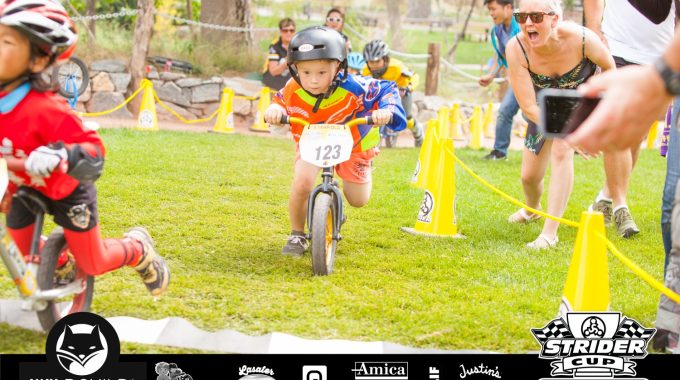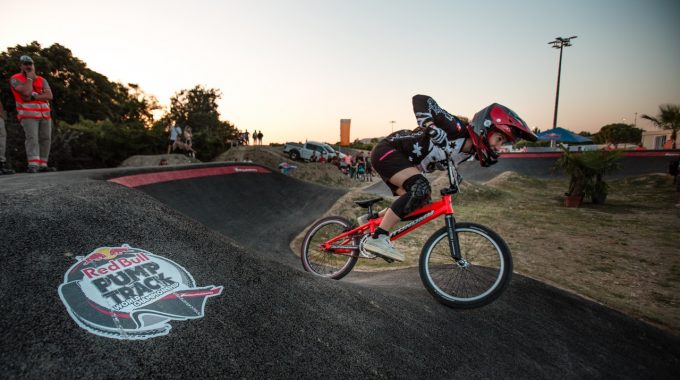I came across these training tips today and thought some of you riders may be interested in it ,have a read and see what you think.
Paul Caldwell is a well respected vet pro racer and trainer in the USA, and a lot of riders have done very well following his training programs, so this is just a taster of what he does…..
BASIC TRAINING…
This is a basic training template will provide great results for anyone who uses it, if the simple instructions are followed. The important to remember is that nothing that I’ve written is set in stone, so you can feel free to use whatever exercises you have access to. I have also not provided any pre-set parameters on your main exercises, but rather an “intensity zone” that I want you to reach. If you give it everything you’ve got within the given “zone,” you will have done the correct amount of work.
Before I lay out the template, I want to preface it with a few truths that I’ve learned over my 20+ years of training for sports.
1) A training program can be the best in the world but will not yield the desired results if you don’t train with consistency. A consistent effort is better than periods of sporadic, non-directional efforts. Too many athletes jump from “program” to “program” in hopes of finding a magic bullet. The only true “magic bullet” is consistent hard work. Without that, you aren’t going to reach your potential.
2) The body (nervous system) doesn’t care what your muscles are being used for. They don’t ask if you’re lifting weights, walking, or doing sprints on your bike. The only thing the nervous system needs to know is the magnitude of the “load” (stressor) on the muscles, so it can react with the needed response. So, it’s not always what you do that’s important. It’s HOW YOU DO IT that matters.
3) You have to remember what you’re training for and make THAT the majority of your training focus. If you’re training to race BMX, spend all the time you can on your bike, at the track. Practice usually always precedes training for the new rider. You need to ride as much as you can and get used to doing what you’re going to do in competition. Don’t sacrifice your track time for “gym” time if you can’t keep your bike straight on the track. You don’t need to worry about getting faster. You need to learn how not to kill yourself and everyone else on the track with you, first. It’s about finding your training balance.
4) The process of training doesn’t have to be confusing. The use of complex words and theories to explain things isn’t necessary. Neither is the over-analysis of minutia with most athletes. Simply, perform your sport (ride your bike) and improve your athleticism (strength/conditioning) and nature will take it’s course. The truth of the matter is, most of you are not amongst the “elite athletes” in the sport. Therefore, it’s not necessary to follow the training protocol of those riders. The simple basics work with the majority of the population.
THE PROGRAM* This training template is for those who have a basic understanding and experience in the gym. If you do not know how to properly perform any of these exercises, ask someone who does to show you the proper form. Do not risk injury. Always make sure you are physically healthy before you take on any strength and conditioning work.
Alternate between “Session A” and “Session B.” There should be at least two rest days in between workouts to ensure proper recovery has taken place.
*All workouts should be preceded by a dynamic warm-up. Perform the following before moving onto training sessions.
DYNAMIC WARM-UP:
Easy warm up on BMX bike x 5 min or Jump Rope- work up to 2-3 minutes smooth jumping
Jumping Jacks x 20
Lunge w/Twist x 20 yards (twist towards the lead leg)
Inch Worm w/push up x 20 yards**
**(See: http://www.youtube.com/watch?v=M0h2J776s2U)
Body Extension x 20 yards (these are basically burpees, jumping forward instead of upward)
SESSION A:
ACCELERATION SPRINTS: Nx10 yards (add 5 yards each week.)
N=the number of sprints you are to perform. This will be determined by your nervous system. When you begin to slow down, cease performing sprints.
Perform these with your lead foot on the pedal, back foot in front of trail pedal. Concentrate on your form and try to get your speed up as quickly as you can.
Have someone time your efforts and make sure that you’re getting full recovery between efforts, 2-3 minutes. When your times start slowing, you’re speed training is over. If you don’t have a partner to time you, when you feel that you’re slowing down, stop the sprints and move on.
STRENGTH TRAINING:
Perform in circuit fashion.
DEPTH DROPS: *Nx5
N=the number of sets performed. This will be tied to your squats. Once you’ve reached your “maximum” for the day on your squat exercise, cease performing drops.
Perform these by standing on a box about 6-12” high. Step off the box and land in a ¼ squat position. Immediately upon landing, freeze all movement by making your body solid like a gymnast sticking a landing. Pause for a second, then repeat.
*Stop doing depth drops when done with squats.
SQUATS: Nx10 rep max
N=the number of sets of squats that you will perform in this session. This will be determined by your nervous system. When you are no longer about to perform 10 reps, with good form, cease performing squats.
If using your bodyweight as resistance, perform as many reps as you can in 45 seconds for 3-4 sets.
If using barbells, work up to a 10 rep maximum. To do this warm-up to a weight that you know you can perform for 12 reps. Do 10 reps. Add weight at your discretion (listen to your body) and perform 10 reps. Continue until you reach a weight that you can no longer complete 10 reps with, in good form.
RECLINE PULL UP: 4x to failure
Lay on the floor with a bar set up just beyond your reach and your feet elevated. Grab the bar and pull yourself up to it. Simple…
PUSH UPS: 4x to failure
HIP EXTENSIONS: 4x to failure
SESSION B:
FLYING 20 SPRINTS NX20 yards (add 5 yards each week)
N=the number of sprints you will be performing. This will be determined by your nervous system. When you start slowing down, cease sprinting.
Perform these by setting up three markers: One for your start, one at 15 yards and the final one at the 35 yard mark. This time you’re going to use a rolling start. As you hit the “start” marker, go as hard as you can until you hit the next marker. At this point, try to maintain your speed, without straining or “trying” to go faster. This will work on your maximum speed. When you start slowing down, stop sprinting.
Perform in circuit fashion:
*Bodyweight trainees will perform LUNGES 3-4 x max reps in 45 sec.
DEADLIFT: Nx5 (as with squats in Session A, work up to 5 rep max)
N=the number of sets you will perform. This will be determined by your nervous system. When you are no longer able to perform 5 reps with good form, cease deadlifts.
CHIN UPS: 4x to failure
DIPS: 4x to failure
ABS can be trained every day as long as the emphasis changes. The following is an example of what I have my athletes do on different days.
FLEXION/EXTENSION: V-Ups/Reverse Crunch/Cobras/V-Sits
ROTATION: Russian twist/Diagonal Wood Chop with med ball/Side “L” Raise/Rotation
STABILITY: Plank holds in all directions
***If any of these terms are foreign to you, look them up on You Tube. There’s more than likely a video on there. I will be putting up all pertinent video, soon.***
All you need to do is pick an emphasis and nail it with a couple of quality sets of max effort reps and you’re dialed.
UNDERSTANDING THE TEMPLATE FORMAT:
The main thing that might throw people off is the “Nx5” or “Nx20 yard” set up of the “money” exercises in this template. The “N” simply stands for the number of sets (strength) or reps (sprints) you are to perform in that session.
The reason that I do this is because it’s stupid for me to tell you to do “5×5 of 85% of your 1 rep max” or “5×30 yard sprints” or any other set number of an exercise because I don’t know how your body’s systems are working that day. Those numbers would merely be guesses. How do I know if that’s enough? Too much? Not enough? I wouldn’t! I’d simply be pulling numbers out of my backside, hoping it was enough. That’s NOT how you train an athlete!
By allowing your nervous system to tell you when you’re “done” you can ensure that you’ve done the OPTIMAL amount of work for your body’s resources that day. This ensures that your training results won’t be based on hope and chance, but rather on your own personal physiology and recovery ability.
The caveat of this “program” that I’ve provided here is you can manipulate it according to your own personal needs. If you want to do your sprint work separately from your strength work, you can do that. If you want to substitute a different exercise, you can do that too, as long as you’re not trying to replace squats with leg extensions. You can even use this template as your main training and the original example I provided as a general physical preparation template to use on your “off” days to build up your work capacity.
If you incorporate the information I’ve given you and listen to your body, your progress will yield the results you’re looking for. GUARANTEED!
As for planning your own training, I’m going to give you a simple formula to use. If you plan your training accordingly, you will be on point. GO HARD FOR 2-3 WEEKS, THEN BACK OFF FOR 1 WEEK. Simply put, your body can only handle so much intense near “maximum” training. Plus, after about 3 weeks, you reach a state of diminishing returns as your nervous system reaches burn out. However, if you train hard in blocks of 2 or 3 weeks (depending on how your feeling, your race schedule and the myriad of other factors that sap our energy) then back off* for a week (or more if needed) you will come back recovered and stronger.
*Back off weeks entail cutting back training volume, not elimination of training. It simply means easing up the stress on your body so you can recuperate. This is a good time to work on your beach muscles.
Again, I want to stress the importance of RIDING YOUR BMX BIKE ON/OFF THE TRACK. Your bike is your partner in this game and you need to know how he/she works. You can be in the best ”athlete” on the track and still not race/ride well. Riding is the reason you’re training, not the other way around. So always make sure that you get your RIDING work done. That means, if nothing else, make sure you get your sprint work done, as well as put in your track time. Those two things will ensure you can ride your bike. The other training will ensure that you can ride your bike even FASTER.
There you have it….You’ve got everything that you need to get going in the right direction within this post as a new “trainee.” Now what are you going to do with it?






Share